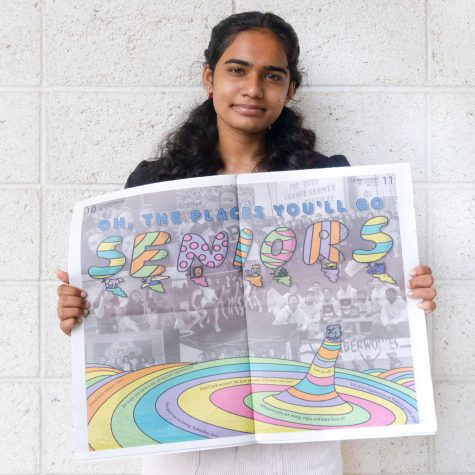Fighting Racism with Racism: An Impossible Battle Against Black and Asian Hate
Whether it is Black Lives Matter or Stop Asian Hate, both minorities are fighting for the same thing: freedom and equality. Rather than pointing the blame at other minorities for racism, Asian Americans and Black Americans need to protest together in order to dismantle systems that suppress them.
From the start of 2020 and the COVID-19 pandemic, news of the Asian community being physically tormented and warned to “go back to China” and the Black community facing the death of several innocent citizens has crowded media networks nationwide. Racism against these two minority groups is not a new phenomenon, but rather has been brought to the attention of mainstream media due to active protests.
A sense of competition between the communities and anti- sentiments poses a larger issue as each minority group blames the cause of several hate crimes on the other, according to the Washington Post. However, fighting bigotry with bigotry is completely wrong and rather than helping fight against POC racism, it worsens the situation.
“Anti-Black feelings exist in the Asian community, and anti-Asian feelings exist in the Black community as well,” social studies teacher Shameemah Motala said. “But I don’t necessarily think that is where the anger should be directed, but to the systems in place that keep the communities apart rather than the general connection that both communities suffer through the lens of racist institutions.”
Beneath the cries of justice and advocacy, greater anti-Black sentiment has spawned within Asian Americans even as nationwide protests in defense of Black lives continue. A video showing Black men as the perpetrators of an attack has prompted comments accusing Black Lives Matter supporters of indifference and blaming the attack on anti-Asian sentiment within the Black community.
On Reddit and Twitter, users have repopularized a 2010 article calling “black-on-Asian violence” San Francisco’s “dirty secret.”
“People want to have a Black villain and scapegoat,” said San Francisco Bay Area activist and Oakland city councilmember Carroll Fife during an interview with the Guardian. “People are right and justified to feel beset upon because Asian folks are othered in America.”
This sense of hatred between the two minorities began during the mid-19th century economic boom, which created a demand for cheap labor. White business elites prioritized Asian immigrants over Black citizens. Asians consumed the economic need while still being thought of as aliens due to Black leaders’ protests against them, according to political scientist Claire Jean Kim.
The history between these two groups still affects them today as a perceived success story of Asian Americans are used against Black Americans’ fights opposing structural discrimination.
“A lot of people want to make it about who is suffering the most in terms of discrimination and oppression between the two races,” junior Cinta Adhiningrat said. “It is simply downplaying what both races have been through since they both face similar oppression through our system.”
People are terrified both of COVID-19 and the sudden increase in racism; however, when this universal concern transforms into hatred and anger, communities turn against each other when the world needs to empathize and unite the most. One cannot fight racism with racism.
“Supporting our Asian community is not about dividing us. This support is for all of us suffering under white supremacy. We need to understand that so we can triumph and have public and personal safety,” youth counselor Eddy Zheng said during an interview with the Guardian.
Several Black and Asian organizations have already suppressed this rhetoric and used this as an opportunity to call for solidarity and pay homage to the victims of hate crimes through the form of “Black Asian Unity” protests.
“Ultimately, the focus should really be upon how can we dismantle the systems that keep different communities apart and what is in place institutionally,” Motala said. “That is something that we should re-examine within our communities about how can we be more unified rather than divided.”
This is how we have to fight racism and discrimination against all people of color: As a united force. Racism and inequality are a disease rooted in American history, and blame is often the easiest solution for a group to accept their circumstances as a person of color. But, as a person in a community, we can protect ourselves without becoming conduits for racism through protesting as a united force against systemic racism.
Your donation will support the student journalists of Portola High School. Your contribution will allow us to purchase equipment and cover our annual website hosting costs.

Dheeksha Bhima Reddy is the co-Editor-in-Chief for her third and final year on the Portola Pilot. Through her newfound obsession of drinking coffee (cold...




